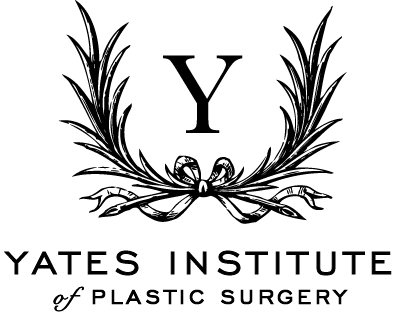Facelift vs Injectables
When is a facelift better than using botox and fillers to replace lost volume and skin elasticity (stretch) in the mid-face, neck, and brows? This is a very personal decision, but there are a few ways to arrive at the right choice for you. The main factors are age, anatomy, affected areas, and of course, budget.
Long-Term Costs: Facelift vs Injectables (Over Time)
Generally speaking, you should not be considering a facelift unless you are 45 or older. (Although there is a small percentage of patients who do benefit from surgical intervention even earlier.) Just because you are older than 45 does not mean that you need a facelift. Injectables may be right for you, as long as you’re getting the cosmetic result that you want such as removing all of your forehead wrinkles or highlighting your cheekbones. When the cost of quarterly injectables exceeds $2,500 to treat these areas, it may be time to consider a facelift. In general, people requiring multiple syringes of fillers, administered frequently would likely be better served by surgery. More simply said, if your annual cost to maintain your youthful look with injectables is high, from an economic standpoint, it may be more cost-effective to opt for a facelift which ranges from $15,000 to $25,000. A facelift will last 10 to 15 years, so your cost is averaged over how long your result lasts. When you’re a candidate for a facelift and choose to injectables over a facelift, you’re likely to spend more in the long run. While a facelift has a high initial price tag of $15,000 to $25,000, when averaged over 10 years, you’re spending less than injectables, with a likely better cosmetic result.
Cosmetic Results: Facelift vs Injectables
Keep in mind, results are more important than cost. The idea of a facelift can be daunting. The goal is to have you looking 10-15 years younger once you’re fully healed. If you are showing signs of advanced aging such as excess skin and fat in the neck, hanging skin at the jawline (known as jowls), and deep lines and creases, only a facelift can fully correct these issues. In contrast, injectable results are not as transformative when compared to a facelift. Generally, you will get greater cosmetic impact from injectables the younger you are and with less acute your aging. I regularly recommend injectables to men and women ranging in age from 28 – 60, whereas I rarely recommend facelifts to anyone younger than 45 years old.
How long does it take to recover from injectables vs a facelift?
Most patients who undergo injectables treatments experience a moderate amount of bruising and inflammation. Bruising and inflammation are not visible after 5-7 days for most patients. In some cases other than the initial swelling there is no bruising whatsoever. Dr. Yates has pre and post-treatment plans to minimize bruising and swelling, as well as special compounded numbing creams to minimize the initial discomfort.
Facelift patients often experience moderate to severe bruising and inflammation after their procedure. After 2 weeks, most patients’ swelling and bruising have significantly decreased and they are able to wear concealer. At 3 to 4 weeks, most patients have fully recovered from their facelift procedure. Scars can be visible for some months, and most are barely perceptible by 6-12 months after surgery. Dr. Yates has a plan to optimize your recovery from your facelift as well as manage your pain to ensure that you are comfortable at every step towards your new youthful you.
Other Considerations: Facelift vs Injectables
What patients often overlook are the lifestyle choices that accelerate aging. Lifestyles in South Florida and particularly Fort Lauderdale lend themselves to outdoor activities and water sports which means lots of sun exposure. Extended daily sun exposure and smoking are two of the most detrimental activities to preserving a youthful face with good volume and elasticity. Of course, I am not discouraging recreation, fitness, water sports, or getting out and enjoying a beautiful day, but I am saying that you should wear the highest protection sunscreen available. Sun exposure can lead to melanoma, a type of skin cancer. Neither a facelift nor injectables can reverse the effects of sun-accelerated aging. This type of aging can only be prevented not reversed.
Summary: Facelift vs Injectables
In summary, injectables can supplement a facelift procedure as you aim to maintain your youthful look after surgery, however, injectables cannot correct facial aging to the extent that a facelift will. If you are a candidate for a facelift and are choosing to use injectables to achieve a surgical result, you are avoiding the downtime and recovery required for a facelift, but the cosmetic result may be less optimal. Injectables are great for prevention and maintenance. In some cases, injectables such as Botox, Dysport, Juvederm, and others can be used in place of surgery. Dr. Yates strongly recommends that you consult a board-certified plastic surgeon if you have questions on which treatment or procedure is right for you.

